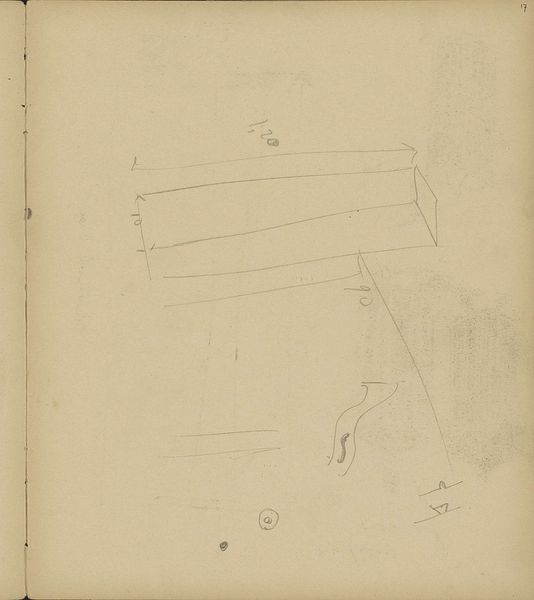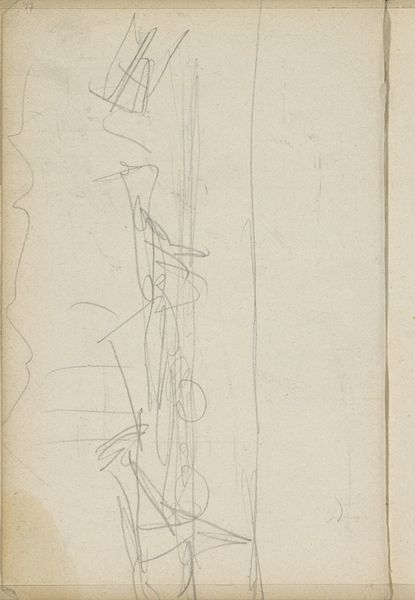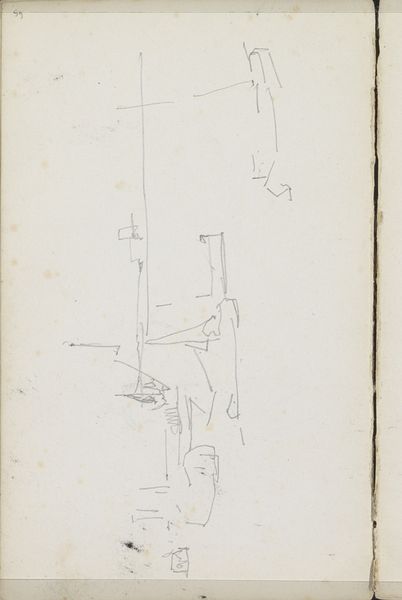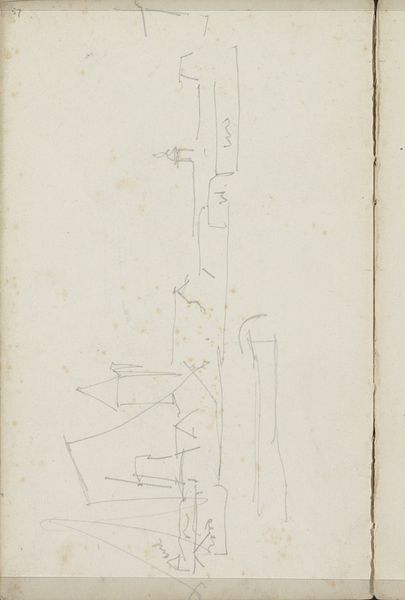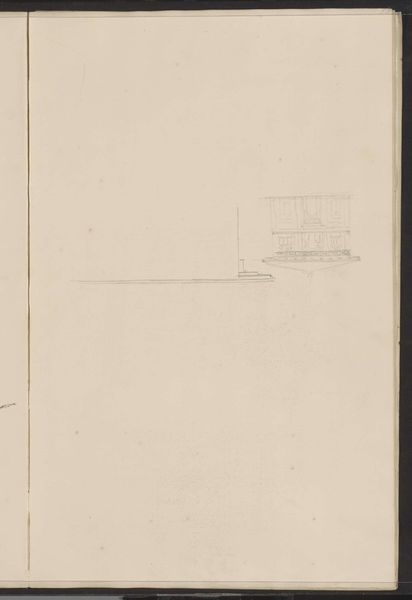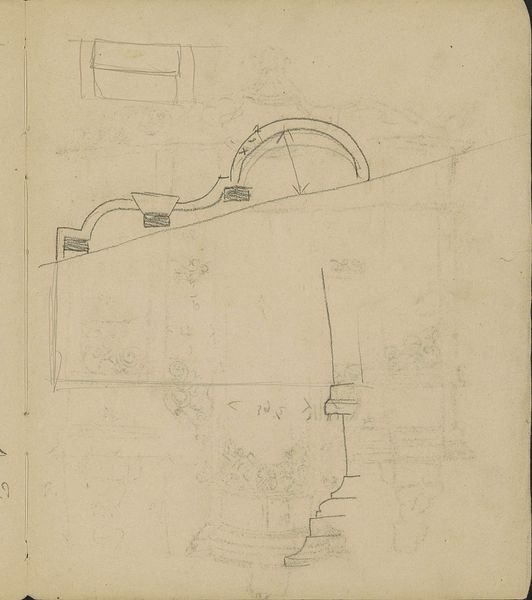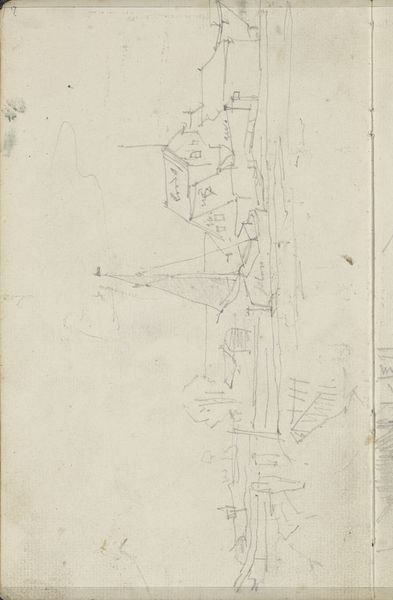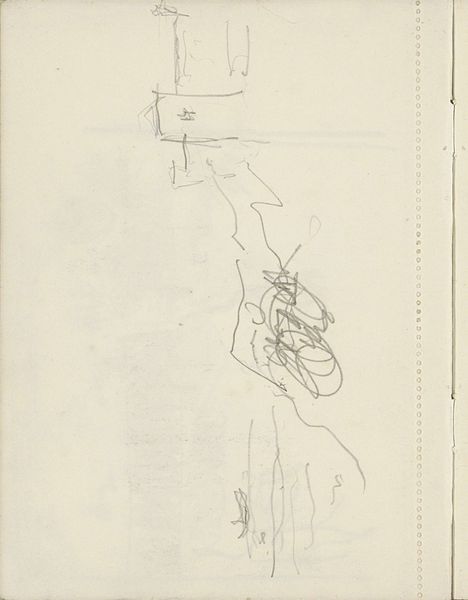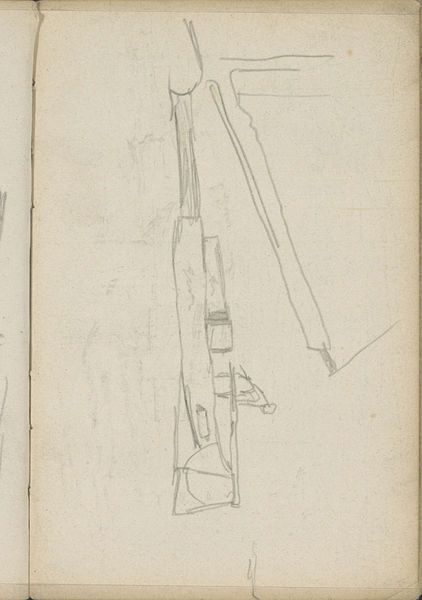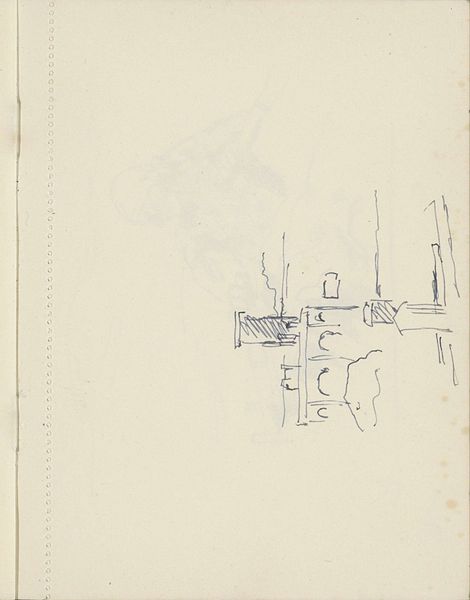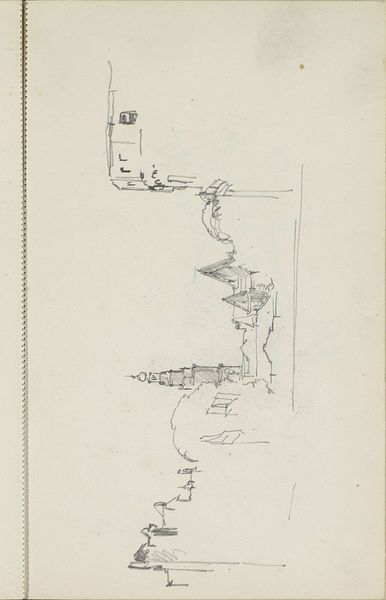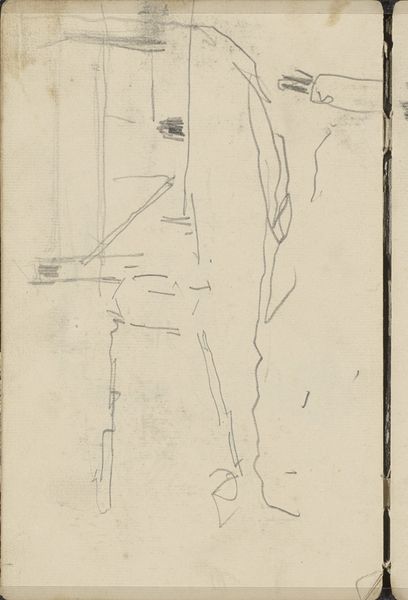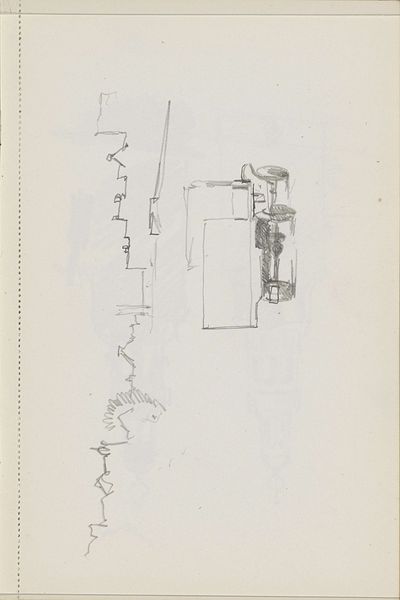
drawing, paper, pencil, architecture
#
drawing
#
art-nouveau
#
paper
#
geometric
#
pencil
#
architecture
Copyright: Rijks Museum: Open Domain
Curator: Before us, we have "Plafond," a drawing rendered circa 1906 by Carel Adolph Lion Cachet. It is rendered in pencil on paper, and currently held in the Rijksmuseum. Editor: My initial impression is one of understated elegance. The spare pencil lines hint at intricate geometric forms; there is something quietly assertive in this Art Nouveau vision. Curator: Indeed, the linear precision underscores the architectural function of the drawing itself. Observe how Cachet delineates each form—the interplay of line and shadow intimates a consciousness toward depth and volume, alluding to a structure awaiting full manifestation. Editor: But I am struck by its seemingly utilitarian function. The materiality of the sketch - the humble paper and pencil - remind us of the artistic labor and the industrial production awaiting this vision to become real. We’re seeing not only a formal idea, but the foundation upon which the artisans could then bring this concept into the material world. Curator: The very utility you speak of elevates the design itself, I'd suggest. Cachet seems intent on isolating quintessential geometries, removing superfluous details to uncover ideal forms and functions, as a design object waiting to manifest into an artistic statement. The lines become symbolic themselves—a code waiting to be broken, expressing the zeitgeist of its period. Editor: But beyond the geometric expression, it underscores an environment created for the consumption by someone - whether public or private. Ultimately, how will this design enhance the physical existence of individuals who occupy the designed space? It seems incomplete unless you grasp this as part of this larger artistic creation. Curator: Perhaps its strength lies in that open interpretation and design to occupy public space. In fact, one finds a remarkable dynamism within its restraint. Cachet provides the grammar; it is the occupier of the space that then writes its history. Editor: So, while it is easy to simply see “Art Nouveau” here, it is also impossible to remove the functionality from this type of drawing—a delicate balancing act between both. Curator: I find myself captivated by how essential yet boundless his artistic language seems, still, today. Editor: Yes, revealing how labor and artistic vision form an almost inseparable artistic concept, regardless of the end product.
Comments
No comments
Be the first to comment and join the conversation on the ultimate creative platform.
